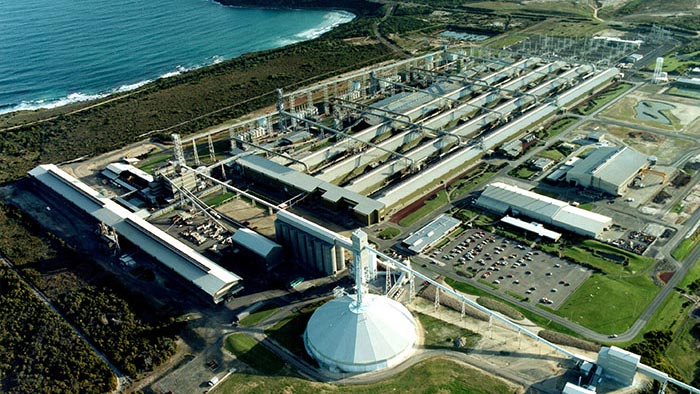AGL Energy has snared a new, nine-year contract to supply aluminium giant Alcoa Australia with electricity for its majority-owned Portland Aluminium Smelter in Victoria.
The deal is to supply roughly 50 per cent, or 300MW of the power needed to run the smelter over a period running from July 2026 until July 2035 – the same date that AGL’s Loy Yang A coal plant in Victoria is due to close.
2035 is also the date the Andrews government has set for Victoria to be running its grid on 95 per cent renewable energy. No detail was offered on the mix of fossil and renewable energy AGL has agreed to supply.
Alcoa, meanwhile, is expecting to achieve net zero carbon emissions by 2050, but says it is currently sourcing around 40 per cent of the Victorian smelter’s consumed electricity from renewables and on the lookout for more.
Alcoa Australia president Matt Reed says the company is pursuing options for the smelter’s remaining electricity requirements mid-2026, “with a strong focus on renewable energy.”
“South-Western Victoria has been identified as a renewable energy zone with several emerging projects that could potentially provide green power to the smelter and the wider region,” Reed said.
In the meantime the smelter will remain at least partially reliant on AGL’s ageing and increasingly unrelaible coal plant to supply the energy needed to produce around 20 per cent of Australia’s aluminium supply.
As one of the biggest energy loads in Victoria, smelter also provides important market services, including in helping to balance the grid as more renewables enter the system.
Aluminium smelting ranks as one of the “hard-to-abate” sectors, both in Australia and globally, due to its huge demand for firmed baseload supply.
Most of Australia’s smelters – with the exception of Bell Bay in Tasmania, where the grid suppy is already often 100 per cent renewable – still rely coal power, but this will need to change if they can hope to compete on a global market that is rapidly going green.
Tomago Aluminium, the single-largest electricity user in New South Wales, in 2021 set a goal to transition to 100 per cent renewable electricity before 2030, and last year began publicly seeking “new and innovative” investment and collaboration proposals to develop renewable generation and storage products.
For smelters like the Portland facility, offshore wind firmed by battery storage could offer a promising alternative.










